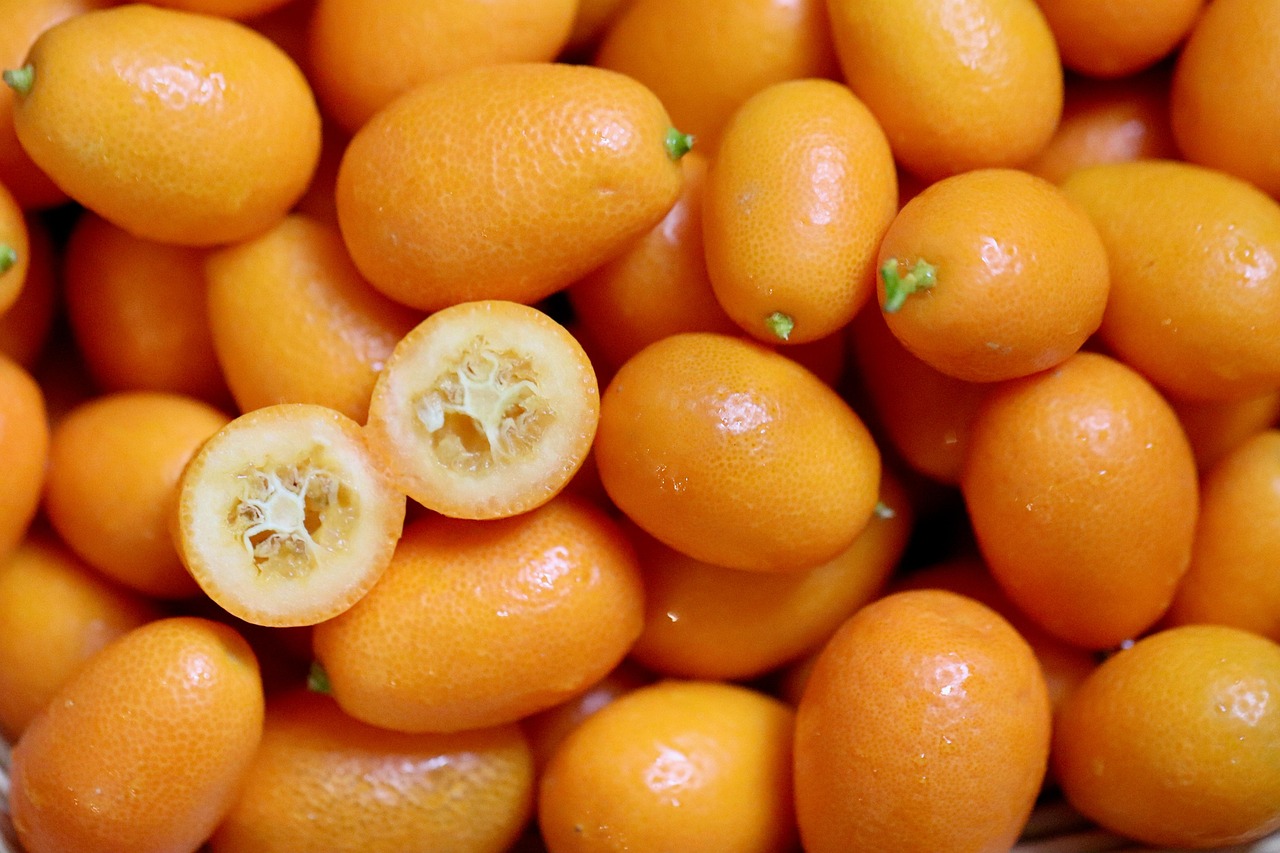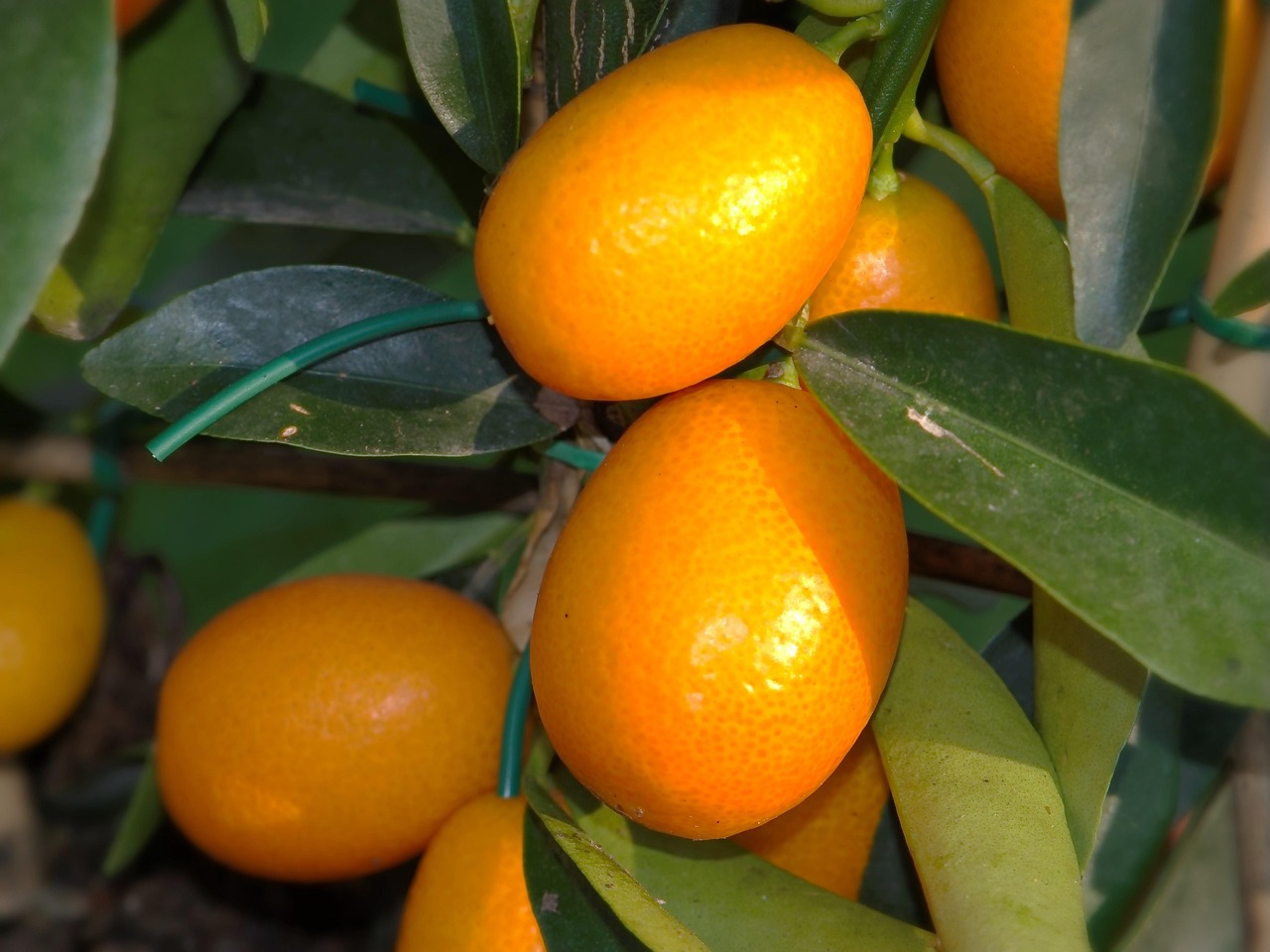Specialized pruning for dwarf citrus trees is essential for promoting healthy growth, enhancing fruit production, and managing tree size. Proper techniques ensure that the trees receive adequate sunlight and air circulation, preventing diseases and encouraging a robust yield.
Dwarf citrus trees have become increasingly popular among gardening enthusiasts and homeowners. These compact plants not only fit well in smaller spaces but also produce delicious fruits. However, to maintain their health and productivity, specialized pruning is necessary. This process involves selective removal of certain branches, allowing the tree to thrive and produce fruit effectively.

Understanding the specific needs of dwarf citrus trees is crucial for anyone looking to cultivate them successfully. Unlike standard-sized citrus trees, dwarf varieties have different growth habits and require tailored care. Pruning plays a vital role in shaping their structure and ensuring they develop properly.
Benefits of Specialized Pruning
There are several advantages to pruning dwarf citrus trees. Here are some key benefits:
- Improved Air Circulation: Pruning helps to open up the tree’s canopy, allowing better airflow. This reduces the risk of fungal diseases.
- Enhanced Sunlight Exposure: By removing overcrowded branches, more sunlight reaches the inner parts of the tree, promoting healthy growth.
- Increased Fruit Production: Proper pruning can lead to better fruit set and quality by allowing the tree to focus its energy on developing fewer, but more fruitful branches.
- Size Management: Dwarf citrus trees can be kept at optimal sizes for container gardening or limited spaces through regular pruning.
In addition to these benefits, specialized pruning can help manage pests. A well-maintained tree is less likely to attract harmful insects, leading to healthier plants overall.

When to Prune Dwarf Citrus Trees
Timing is critical when it comes to pruning dwarf citrus trees. The best time to prune is typically during late winter or early spring, just before new growth begins. This timing allows the tree to heal quickly as it enters its active growth phase. However, light pruning can also be done throughout the growing season to maintain shape and remove any dead or diseased wood.
It is important to avoid heavy pruning late in the season, as this can stimulate new growth that may not have time to harden off before colder weather arrives. Additionally, pruning during the summer months can lead to excessive sap loss and stress on the tree.
Pruning Techniques for Dwarf Citrus Trees
Several techniques can be employed when pruning dwarf citrus trees. Understanding these methods ensures that the pruning process is effective and beneficial for the tree’s health.

1. Thinning Cuts
This technique involves removing entire branches or stems at their point of origin. Thinning helps reduce overcrowding in the canopy and promotes better air circulation. Make sure to choose branches that are weak or crossing each other.
2. Heading Cuts
Heading cuts are made by cutting back a branch to a bud or lateral branch. This method encourages bushier growth and can help control height. However, it is essential to avoid excessive heading cuts, as they can lead to a spindly appearance.
3. Removal of Dead or Diseased Wood
Regularly inspect your dwarf citrus trees for any signs of dead or diseased wood. Removing these branches promptly not only improves the tree’s appearance but also prevents the spread of disease.

4. Shaping the Tree
The overall shape of the tree should be considered during pruning. Aim for a balanced structure that allows sunlight to penetrate all parts of the canopy. This balance can mean selectively removing branches from one side if it appears lopsided.
Tools Needed for Pruning
Having the right tools is crucial for effective pruning. Here are some essential tools for pruning dwarf citrus trees:
| Tool | Description |
|---|---|
| Pruning Shears | Ideal for small branches and precise cuts. |
| Loppers | Used for larger branches that pruning shears cannot cut. |
| Saw | A small saw can be helpful for thicker branches. |
| Gloves | Protect your hands while working with sharp tools. |
Using clean, sharp tools is essential to ensure smooth cuts and reduce the risk of injury or disease transmission. Always sterilize your tools before use, especially if you have recently pruned diseased plants.
With proper knowledge and techniques, specialized pruning can greatly enhance the health and productivity of dwarf citrus trees. Taking the time to understand their unique needs will result in fruitful rewards in your garden.
Common Mistakes in Pruning Dwarf Citrus Trees
While pruning is beneficial, there are common mistakes that many gardeners make. Being aware of these pitfalls can help ensure that your dwarf citrus trees remain healthy and productive.
1. Over-Pruning
One of the most frequent mistakes is over-pruning. This occurs when too many branches are removed at once, which can stress the tree. Over-pruning can hinder growth and reduce fruit yield. It is advisable to prune only 20-30% of the tree at a time.
2. Incorrect Timing
Pruning at the wrong time can lead to poor results. As mentioned earlier, pruning should ideally be done in late winter or early spring. Pruning during the fall can stimulate new growth that may not survive the winter.
3. Neglecting to Clean Tools
Failing to clean pruning tools between cuts can spread diseases from one branch to another. This negligence can lead to infections that may harm the tree. Always disinfect your tools with a solution of bleach and water or alcohol.
4. Ignoring Tree Structure
Another common mistake is disregarding the natural shape and structure of the tree. Pruning without considering how the tree grows can result in an unbalanced appearance. Aim for a well-rounded shape that allows light to penetrate throughout the canopy.
Signs Your Dwarf Citrus Tree Needs Pruning
Recognizing when your dwarf citrus tree needs pruning is important for maintaining its health. Here are some signs to watch for:
- Overgrowth: If the tree appears overly dense, it may need thinning to improve air circulation.
- Dead or Diseased Branches: Any signs of dead wood or disease should prompt immediate pruning to prevent further issues.
- Stunted Growth: If your tree seems to be growing slower than expected, it may need pruning to redirect its energy.
- Pest Infestation: An increase in pests can indicate that your tree is unhealthy and may require pruning to eliminate affected areas.
Techniques for Maintaining Tree Health
In addition to specialized pruning, there are other techniques that can contribute to the overall health of your dwarf citrus trees.
Watering Practices
Proper watering is crucial for the health of dwarf citrus trees. Here are some tips:
- Avoid Overwatering: Excessive moisture can lead to root rot. Ensure that the soil drains well.
- Deep Watering: Water deeply but infrequently to encourage strong root development.
- Monitor Soil Moisture: Use a moisture meter or simply check the soil with your fingers to determine when to water.
Nutrient Management
Feeding your dwarf citrus trees with the right nutrients is also essential for their growth and fruit production. Consider the following:
- Citrus Fertilizers: Use fertilizers specifically designed for citrus trees, as they have the right balance of nutrients.
- Timing of Fertilization: Fertilize in early spring and again in late summer for optimal results.
- Organic Options: Consider using organic fertilizers or compost to provide a natural nutrient source.
Pest and Disease Management
Pests and diseases can pose significant threats to dwarf citrus trees. Here are some common issues and how to manage them:
Pests
Citrus trees are susceptible to various pests, including aphids, spider mites, and scale insects. Here are some management strategies:
- Regular Inspections: Frequently check your trees for signs of pests such as sticky residue or visible insects.
- Natural Predators: Encourage beneficial insects like ladybugs that prey on harmful pests.
- Pesticides: If necessary, use insecticidal soaps or neem oil as organic options for pest control.
Diseases
Diseases such as root rot and leaf spot can affect dwarf citrus trees. To manage these issues:
- Ensure Proper Drainage: Good drainage helps prevent root rot caused by standing water.
- Remove Affected Leaves: Prune away any diseased or infected leaves promptly to prevent spread.
- Maintain Tree Hygiene: Keep the area around the tree clean from fallen leaves and debris that can harbor pathogens.
The Role of Mulching
Mulching is another beneficial practice for dwarf citrus trees. It serves several purposes:
- Moisture Retention: Mulch helps retain soil moisture, reducing the need for frequent watering.
- Weed Suppression: Applying mulch can help suppress weed growth, allowing your tree to access more nutrients.
- Temperature Regulation: Mulch keeps soil temperatures stable, benefiting root health.
Select organic mulches like wood chips or straw for the best results. Apply a layer of about 2-4 inches around the base of the tree, being careful not to pile it against the trunk.
Specific Pruning Techniques for Different Dwarf Citrus Varieties
Each type of dwarf citrus tree has its own unique growth habits and requirements. Understanding these differences can help you tailor your pruning approach effectively. Here are some common varieties and their specific pruning needs.
1. Dwarf Lemon Trees
Dwarf lemon trees are popular for their fragrant flowers and tangy fruits. When pruning these trees, consider the following techniques:
- Focus on Airflow: Since dwarf lemon trees can develop dense foliage, prioritize thinning out branches to improve airflow. This reduces the risk of fungal diseases.
- Remove Water Sprouts: These fast-growing shoots can emerge from the trunk or branches. Removing them allows the tree to focus energy on fruit production.
- Maintain Shape: Aim for an open-center structure that balances sunlight distribution. This structure encourages even fruit ripening.
2. Dwarf Lime Trees
Dwarf lime trees, known for their refreshing flavor, also require specialized pruning. Follow these tips:
- Prune After Harvest: Pruning after the fruiting season allows you to shape the tree without affecting fruit production.
- Encourage Lateral Growth: Focus on promoting lateral branches to create a bushier tree, which will yield more limes.
- Remove Old Wood: Cut back any older branches that have stopped producing fruit, allowing new growth to take their place.
3. Dwarf Orange Trees
Dwarf orange trees are cherished for their sweet and juicy fruits. Proper pruning is essential for maintaining their health:
- Thin Excess Growth: Regularly thin out overcrowded branches to ensure that light reaches the inner parts of the tree.
- Cut Back Tall Branches: Trim any excessively tall branches to maintain a manageable height and encourage a more compact shape.
- Inspect for Pests: While pruning, look for signs of pests or diseases and address these issues immediately.
Understanding Tree Growth Habits
A key aspect of effective pruning is understanding how your dwarf citrus tree grows. Each variety has distinct characteristics that can influence your pruning strategy.
Growth Patterns
Dwarf citrus trees typically exhibit various growth patterns, including upright, spreading, or weeping forms. Knowing the growth pattern helps in deciding how to prune:
- Upright Growth: Trees with upright growth may need more thinning to prevent overcrowding at the top.
- Spreading Growth: For spreading varieties, focus on maintaining an open center to allow light penetration.
- Weeping Growth: Weeping forms may require less intervention, but still need occasional shaping to maintain aesthetics.
Fruit Production Cycles
Different dwarf citrus varieties have varying fruit production cycles. Understanding these cycles can guide your pruning schedule:
- Cyclic Fruiting: Some varieties produce fruit in cycles. Prune after the harvest to promote new growth for the next cycle.
- Continuous Fruiting: Trees that produce fruit year-round may require light pruning throughout the year to maintain balance.
The Importance of Seasonal Care
Caring for dwarf citrus trees goes beyond pruning. Seasonal practices are vital for optimal growth and fruit production.
Spring Care
Spring is a crucial time for your dwarf citrus trees as they begin their active growth phase. Consider these spring care tips:
- Fertilization: Apply a balanced fertilizer specially formulated for citrus trees to boost nutrient availability as they wake from dormancy.
- Pest Control: Inspect for pests and treat them with organic solutions if necessary, ensuring the health of new growth.
- Mulching: Reapply mulch to retain moisture as temperatures rise and to suppress weeds effectively.
Summer Care
During the summer months, keeping your dwarf citrus trees healthy is essential as they face heat stress. Here are some summer care suggestions:
- Irrigation Management: Water deeply but less frequently to encourage root development while avoiding water stress.
- Monitor for Heat Stress: Look for signs of wilting or leaf drop, which could indicate insufficient water or excessive heat exposure.
- Tie Up Branches: If your tree has heavy fruiting branches that sag, consider tying them up for support during this time.
Preparing for Winter
The winter months can be harsh on dwarf citrus trees, especially in colder climates. Proper preparation is vital to ensure survival and health through the winter.
Winterizing Techniques
The following techniques will help prepare your dwarf citrus trees for winter:
- Reduce Watering: As growth slows, reduce watering frequency to prevent root rot caused by cold, wet conditions.
- Protect from Frost: In colder regions, cover your trees with frost cloth or move potted varieties indoors during freezing temperatures.
- Clean Up Debris: Remove fallen leaves and debris around the base of the tree to prevent harboring pests and diseases over winter.
Caring for your dwarf citrus trees through seasonal changes will greatly enhance their resilience and productivity over time.
Additional Considerations for Dwarf Citrus Tree Care
In addition to pruning and seasonal care, there are several other factors to consider when cultivating healthy dwarf citrus trees. These factors can significantly influence their growth, fruiting, and overall health.
Soil Requirements
The type of soil you use plays a crucial role in the health of your dwarf citrus trees. Here are some important points regarding soil:
- Well-Draining Soil: Dwarf citrus trees thrive in well-draining soil. Heavy or compacted soils can lead to root rot, so consider using a mix designed for citrus or adding perlite to improve drainage.
- pH Levels: Citrus trees prefer slightly acidic to neutral soil, with a pH range of 6.0 to 7.0. Regularly test the soil pH and amend it as necessary.
- Organic Matter: Incorporate organic matter, such as compost, into the soil to provide essential nutrients and improve soil structure.
Container Growing
If you choose to grow dwarf citrus trees in containers, there are some specific considerations:
- Container Size: Select a pot that is at least 12 inches deep and wide enough to accommodate the tree’s root system. As the tree grows, you may need to repot it into larger containers.
- Drainage Holes: Ensure your containers have adequate drainage holes to prevent water accumulation, which can harm the roots.
- Mobility: Consider using rolling plant stands to easily move your container trees into optimal sunlight or protection from harsh weather.
Pollination Needs
Pollination can affect fruit set and yield in dwarf citrus trees. Here’s what you should know:
- Self-Pollinating Varieties: Many dwarf citrus trees, such as certain lemon and lime varieties, are self-pollinating. However, planting more than one tree can improve fruit set due to cross-pollination.
- Attracting Pollinators: Encourage pollinators like bees by planting flowers nearby. This can significantly improve fruit yield.
Pest and Disease Prevention Strategies
Preventing pests and diseases is crucial for maintaining healthy dwarf citrus trees. Consider these strategies:
- Regular Monitoring: Frequently check your trees for signs of pests or diseases. Early detection can make control much easier.
- Companion Planting: Some plants can deter pests naturally. For example, marigolds can repel aphids when planted nearby.
- Avoid Overcrowding: Give your trees enough space to grow. Overcrowding can lead to increased humidity and disease development.
Final Thoughts
Caring for dwarf citrus trees involves understanding their unique needs and applying specialized pruning techniques along with proper seasonal care. By following the guidelines outlined in this article, including pruning practices, seasonal preparations, pest management, and soil requirements, you can create a healthy environment for these beautiful trees to thrive.
The journey of growing dwarf citrus trees can be immensely rewarding. With patience and attention, you will enjoy an abundance of fragrant blossoms and delicious fruits right from your own garden or patio. Remember that each tree is unique, so adapt your care practices as needed based on its growth patterns and health. With dedication, your dwarf citrus trees will flourish, providing both beauty and nourishment for years to come.
In summary, specialized pruning, seasonal care, and vigilance against pests and diseases are essential components of successful dwarf citrus cultivation. Embrace these practices, and you’ll cultivate thriving trees that enhance your garden’s landscape and yield delightful fruits for your enjoyment.
